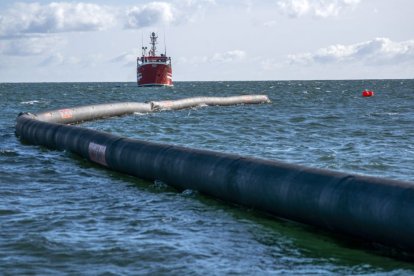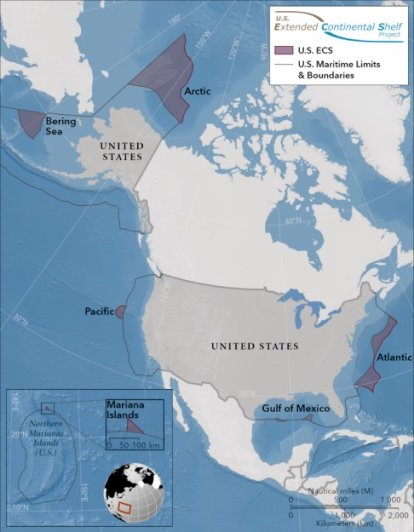U.S. expands its waters by more than 380,000 square miles
The State Department officially announced the expansion of the U.S. continental shelf, which gives the government access to the waters and undersea resources beyond 200 nautical miles.

(Cordon Press)
The United States enlarged its continental shelf for the first time. This is the culmination of the Extended Continental Shelf (ECS) project that the government, through various agencies, made official with an announcement from the State Department on December 19. The United States has expanded its underwater borders by around 380,000 square miles.
The Continental Shelf is the undersea border that starts from the mainland and extends offshore. Countries have absolute sovereignty over their coastlines and territorial waters, which extend 12 nautical miles from the coasts. Beyond these, a country has the right to an exclusive economic zone of up to 200 nautical miles. Beyond this distance, the rights to a territorial shelf come into play.
The ECS project began in 2003 and was entrusted to a special task force composed of members from 14 federal agencies led by the Department of State. Throughout the years of work, the seabed and the geological features of the submarine floor were studied to determine which areas belong to the U.S. territorial shelf.

Mapa de la plataforma continental de Estados Unidos
In total, ECSs have been established in seven different regions, off the coast of Alaska, in the Gulf of Mexico, off the east and west coasts as well as around the Mariana Islands in the Pacific. Antony Blinken's department does not detail precisely what resources are in the areas that make up the new ECS and claims that mapping and exploration work will be necessary. If there are useful resources, such as rare minerals or fossil fuel reserves, the United States has the right to exploit and manage them.
International law
According to the State Department, the new ECS boundaries were established in accordance with international law, as reflected in the relevant provisions of the 1982 United Nations Convention on the Law of the Sea and the Scientific and Technical Guidelines of the Commission on the Limits of the Continental Shelf.
Extensions of territorial shelves are often a source of international litigation. The United States has overlapping areas with Canada, the Bahamas, Japan, Russia, Cuba and Mexico. The U.S. has agreements with some of these countries that mark the boundaries for each. Within the United Nations, the Commission on the Limits of the Continental Shelf (CLCS) regulates and issues recommendations but the Biden Administration has not yet submitted the dossier on these new extensions.
In a statement accompanying the announcement, the State Department stated that it will submit the request to the United Nations in the future. In the meantime, tensions with Russia and China could emerge as a result of this announcement. In the last decade, the Pacific and North Seas have become the main arena of geopolitical confrontation between these countries.
RECOMMENDATION





















